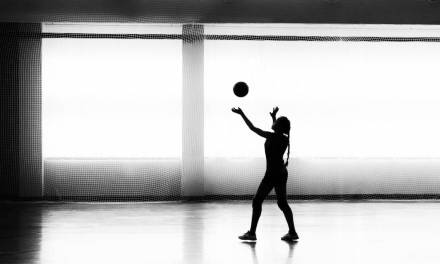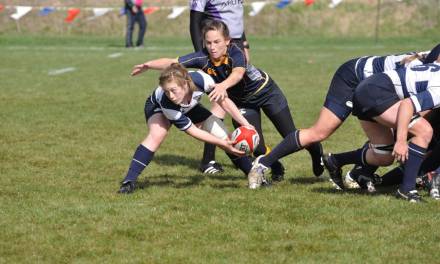Want to offer something different in PE at KS4? Want to improve your attendance numbers at extra-curricular clubs, particularly in KS4? Keen to offer a positive experience to contribute to improved health and wellbeing of your students?
If you answered ‘yes’ to all three of these questions then you should look no further than introducing the game of Matball to your students.
What is Matball?
If you are not already familiar with this activity, Matball is a very simple concept. It is basically bench ball, but with mats!
The key to this activity is that it is inclusive of all abilities, promotes resilience in a competitive sports environment, allows students to transfer and develop key skills from activities such as netball, basketball and football. Yet perhaps more importantly, offers a fun and enjoyable physical activity to engage even the most reluctant young person.
Matball became an instant hit in our school as a Year 11 wet weather lesson a few years ago now, during which time we used the activity as an alternative to ensure that all 80-odd students (a combination of three different teaching groups) could access meaningful physical activity in an average-sized sports hall.
The positive effects were immediately clear. Every single individual was actively participating. Passing and moving into space, which many students struggled with in activities such as netball and football, were grasped by the less able students without so much as a word of encouragement to do so from the teacher.
Communication, both verbal and non-verbal, was evident in a positively competitive environment. Tactics and strategies were implemented by the students with very little input from the teacher. In short, the lesson was arguably the most productive PE lesson many of the students had ever experienced.
‘Matball Madness’
Soon after, due to popular demand, the after-school club was launched and quickly labelled ‘Matball Madness’.
In its first week, we had around 80 students of all ages and abilities attend. By the end of half-term, we had achieved an average of approximately 100 students attending every single week, which is an incredible number for an all-girls school with just over 800 students on roll.
It quickly became the talk of the school and suddenly, Year 10 and 11 students who had never before attended a PE after-school club were first to be changed and in the hall eagerly awaiting the start of the session and accounted for a good 40% of the total attendance.
According to a study by the British Heart Foundation (2012), only 36% of 11-15 year old boys and 26% of girls are likely to be a member of a school sports club, while 49% of boys and 43% of girls reported to have played for a school sports team within the same age group.
This leaves a huge number of students needing access to alternatives to traditional sports activities in order to meet the recommended guidelines of experiencing at least one hour physical activity seven days per week. We have found Matball to be the answer for many of our young people.
Fun, inclusive and uncomplicated
When we asked students exactly why they enjoyed Matball so much, they responded with comments, such as:
“It’s lots of fun! I come with my friends because we don’t like those other sports like football and netball.” (Year 9 Student).
“I’ve never been to a PE club before, but I love this!” (Year 11 student)
“I didn’t realise how competitive I was until I played this game. I really want to win and look forward to coming every week!” (Year 10 student)
It makes total sense. These students are running around, spending time with their friends, challenging themselves and developing their skills – all together within what they perceive to be a ‘safe’ environment away from the stigma attached to traditional sports activities.
Needless to say, Matball is now offered as part of our KS4 core PE curriculum.
What makes this feedback significant is the age group and gender of students attending the club. The BHF reported the largest declines in young people meeting the recommended guidelines for physical activity among 13 to 15 year olds, with only 14% of boys and an even smaller 8% of girls meeting the requirements.
The KS4 numbers in attendance at Matball within an all-girls school suggest this activity is worth a trial in your school.
Simple rules
So how does Matball work? There are two teams, both of which are trying to get all their team onto the mat before the opposition manages the same feat in order to win the game.
This is done by moving the ball around the team until an attacking throw may be taken and caught safely on the mat, resulting in that player joining the catcher on the mat.
The only equipment needed are mats (coned areas work fine if no access to mats), a set of bibs and a ball.
The basic rules are:
- One person from each side starts on a mat.
- You may only use your hands to control the ball.
- You can’t move with the ball (basic netball footwork rules apply).
- The person who throws the ball to be caught by the person on the mat must then go on to the mat.
- No swapping of players on the mat is allowed.
- If the ball is caught by the player on the mat, and they then step off the mat having lost balance, the catch becomes void.
- All players on the mat must be physically on the mat when the ball is caught by a team mate. If someone is off the mat, the catch becomes void.
- If a player travels with the ball, there is a turnover of possession.
- Play starts with a tip off.
- The last player on each team may bounce the ball once on order to achieve an attacking advantage, but must throw to the mat on their next move.
It is totally up to the teacher, or better yet the students, as to whether to start with all these rules or introduce them during the game to avoid any confusion at the start of play.
The flexibility of the activity means that you can play with two, three, four or even as many as six teams if you wish. You simply need to be a little creative with your court.
For example, when working with teams of three you can introduce a triangular court using three mats, whereas with as many as six teams you can use the basis of a rectangular court with a mat at each end, then a further two mats evenly spaced down each side. This allows for teachers to manage the activity between smaller or larger group and numbers.
Ultimately, it is up to you and your students as to how you do it. It is the flexibility of the setup and seemingly distant relationship to traditional sports that seem to make this activity so popular among our students.
So go ahead, give it a try, be creative and hopefully witness the same magical effect this activity can have on your students.
Don’t like the idea of Matball? Adapt a different activity and make it your own, just like we did. It really can be as simple as that!
Rob has been a PE teacher for almost 10 years and has recently been appointed to the school leadership team at Flixton Girls School in Trafford as the Director of Culture & Ethos.










